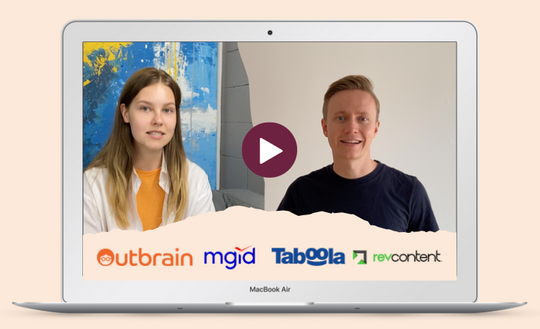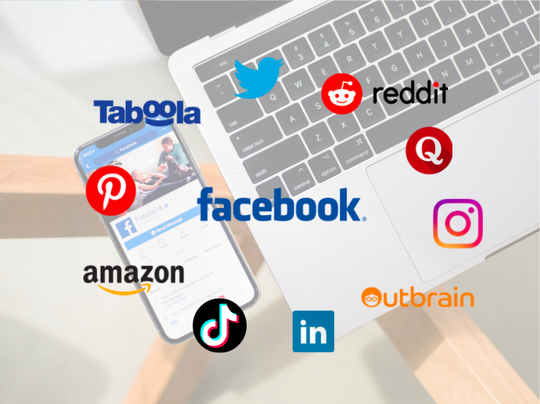
How to Write Catchy Ad Headlines that Drive Conversions
If you talk to an average internet user and ask them whether they often pay attention to online ads, their reply will probably be negative.
Indeed, if you consult the statistics, you’ll find out that over 25 % of the internet users installed an ad blocker in 2019. And you can expect this number to grow this year since people are spending more time online because of the pandemic.
There are quite a few reasons why internet users hate online ads so much. Among these reasons, the most frequent are:
- invasion of privacy;
- interruption of positive experiences online, such as watching videos or playing online games;
- lack of engagement and relevance.
But even though some people seem to hate online ads, the majority of consumers still say that ads have a great influence on their purchase decisions. According to the report by Clutch, 81% of Millennials and 57% of Baby Boomers claimed they purchased a product because they saw an online ad for it.
So, maybe the reason why people don’t like online ads isn’t in ads themselves, but the way they’re crafted?
Today we’ll take a look at how you can write good ad headlines that don’t drive consumers away but help convert them instead.
6 Steps to Creating Advertising Headlines that Work
The copy of an ad plays a crucial role in how the ad is perceived. It’s true that sometimes ad headlines are too invasive, not because of where the ad is placed, but because the headline uses words that imply pressure, intrusion, making the consumers uncomfortable.
Here are the top six tips that will help you create killer headlines for your ads.
1. Optimize the Word Count for Your Ad Headline
First and foremost, your ad won’t convert well if its headline is too long. Let’s consider the following example.
On the image below, you see a Facebook ad, which users frequently find in the top right corner of the Facebook Feed page:

Imagine if the headline for this ad would be more than eight words? A user wouldn’t be able to read it in full. Such a headline wouldn’t convey the entire message, therefore the ad, in general, would make no sense.
Here’s one more example of a Messenger ad with a headline consisting only of two words:

For this platform, making an ad with a long headline doesn’t make sense because it won’t be displayed in full. And if your goal is to convert, your ad headline should make your message clear from the start.
On-Demand Video Course On Native Advertising
Boost your ROAS with native ads. Enroll now with our limited 30% discount.

So, what’s the ideal length of an ad headline?
From the standpoint of science, the optimal length of a headline is five words on average. But, of course, you should take into account the specifics of the platform where you’re placing your ad. So, it would be good to do some prior research and testing to see which headline length would work for your ad.
2. Address Your Target Audience
We already mentioned that your ad headline should convey the message you want to share with your target audience. If you want to increase conversions, addressing your target audience directly in the ad headline could be of great help.
Consider the following example of an Instagram ad, where the advertiser is promoting a job opportunity for freelance developers, who are interested in projects aimed at preserving the environment and preventing climate change:

Have you noticed how precise the ad headline is? It targets a very specific group of people who would like to work only on certain projects, and this is exactly what makes it a good example of a targeted ad.
If your goal is to increase conversions, you should employ this tactic as well. It allows you to get the most out of your online ad because it will only appeal to a niche audience you’re interested in, thus, giving you good ROI and improving conversions.
3. Start Your Ad Headline with a Question
Mentioning your target audience in the ad headline is a good strategy to turn their attention. But if your audience is not very specific, you might need to use another approach to get them to click on your ad.
If this is your case, try starting your headline with a question or a series of questions that give a direct hint at the product or service you’re offering.
Let’s take a look at the following example. This is a Facebook ad for a DNA test, inviting people to check where their ancestors came from:

As you can see, the headline of this ad consists of three short questions followed by a CTA. Even though the headline doesn’t give any specific information, it has enough details for consumers to grasp what this ad is intended for.
How effective is this method for driving conversions?
You might have noticed that when you see a question, you don’t have an immediate answer to, you feel an instant urge to find an answer. This phenomenon is called the curiosity gap, and it is what forces you to get the knowledge you lack.
The curiosity gap is also frequently used in copywriting to drive conversions. Christine Fay, an editor and a copywriter at SupremeDissertations, shares the results of a research done by her company, in which they compared the conversion results from ads with and without the curiosity gap. According to her, ads with the curiosity gap delivered 35% more conversions and, generally, had more engagement.
There’s one thing you need to remember when applying the curiosity gap in your ad headline – you need to delay filling this gap as much as possible if you want to drive conversions. Your task is to make the consumer interested in finding out the answer, which they ideally would get only after purchasing your product. However, try not to make the delay too long, there’s no need to test the patience of your target audience.
4. Pair Your Ad Headline with an Image
A picture is worth a thousand words, and this is also true for online ads. You’d agree that the plain text ad cannot deliver you the engagement that an ad with visuals would, especially if we’re talking about online ads.
Apart from that, there are some ads that just won’t work without an image. For example, if it’s an ad for an e-commerce shop, no matter how good the headline is, the ad won’t bring any results if there are no images of products:

Pairing your ad headline with an image can work well in terms of driving conversions. While the headline delivers a message you want to share with your ad, an image can provide more context and show a bigger picture. Thus, a consumer already has a basic understanding of what you’re offering and is ready to move down the sales funnel and purchase your product.
However, if you decide to include visuals in your ads, don’t forget to test your ad on different browsers to make sure that it displays correctly. Also, when choosing an image, pay attention to how well it suits the general intent of your ad.
5. Use Action Words to Make Your Ad Headlines More Dynamic
If you want your ad to bring you more conversion, then your ad headline should call your target audience to action. You can achieve this effect by including action words in your ad headline.
Which action words work best?
According to Denis Eden, a writer and an editor at GrabMyEssay, an ad headline should start with an action verb like get, explore, start, sign up, etc., paired with an adjective in a superlative comparison degree. There can also be an adverb that describes a time or a place and intensifies the sense of urgency.
Here’s an example of such an ad with an action verb and an adverb that sparks the fear of missing out, which is another effective approach in copywriting to boost conversions:

As you can see, an action verb adds more dynamic to the ad, and an adverb helps create urgency and inspire consumers to act right away. So, if your goal is to help your customers move faster down the sales funnel and convert, such words can effectively push them to action and make the purchase decision.
On-Demand Video Course On Native Advertising
Boost your ROAS with native ads. Enroll now with our limited 30% discount.

Also remember about the importance of proofreading your headlines.
A good ad headline should follow a certain style, not to mention that it should have any grammatical mistakes, which you can get rid of with an online writing app such as Grammarly. Having these services in your proofreading toolkit will also help you ensure that your ad headlines don’t include any words or phrases that are considered spam triggers. Such phrases might include:
- “Stop whatever you’re doing and click here!”
- “Tired of …? Here’s the solution!”
- “Get $10,000 now with this tool!”
Sometimes even a seemingly harmless word or phrase can become a spam trigger if it’s placed in the wrong context. So, if you want your ad headline to help you drive conversions, make sure it doesn’t include anything that would hurt your brand reputation.
6. Test Different Types of Headlines
Whatever message you want to convey, you can do this in multiple completely different ways. Say when promoting team management software, you can go with the following headlines:
- “This software will change the way your team collaborates”
- “Do you know your team can be more productive?”
- “10 Reasons you need this team management software”
- “150 teams have already boosted their effectiveness with this software”
- “5 Steps to make your team work more efficiently”
In fact, there are many more titles you can use to promote the product. But there are five major formulas that you can use to create an effective headline:
- Curiosity headlines
- Question headlines
- List headlines
- Social proof-backed headlines
- How-to headlines
To make the most out of your ad campaigns, it’s highly recommended that you test every possible headline type and focus on the one(s) that deliver the best results.
Over to You
There’s no doubt that an ad copy has a big impact on how your target audience perceives it, but it’s in your hands to change it. And since the headline is the first thing your target audience notices in your ad, start with it.
First of all, make sure that your ad headline has the optimal length. On average, five words are enough, but make your final decision based on the platform where your ad will be placed.
Mention your target audience in the headline, and if you want to drive even more attention to your ad, start your headline with a question and incorporate an image.
Lastly, add some action words to your headline. It will help push your customers down the sales funnel and boost your conversion rates as a result.

 Feed
Feed


